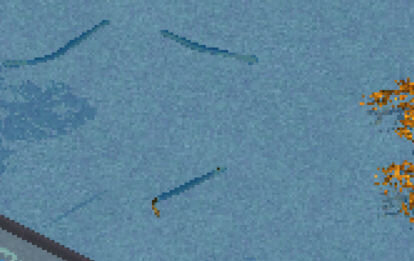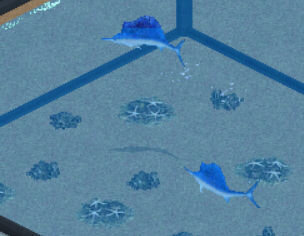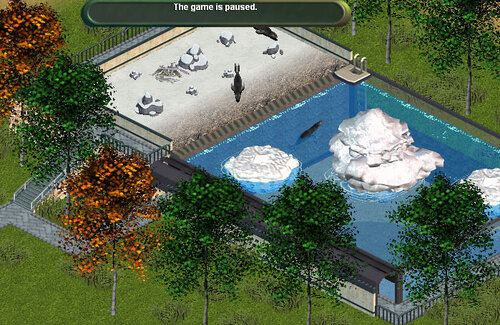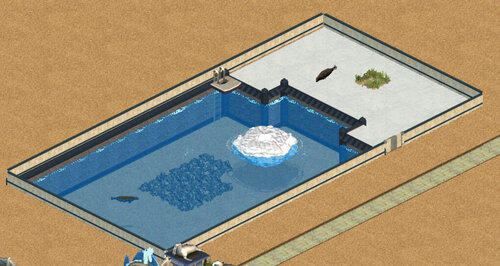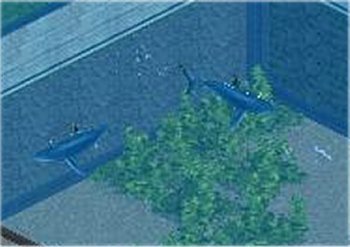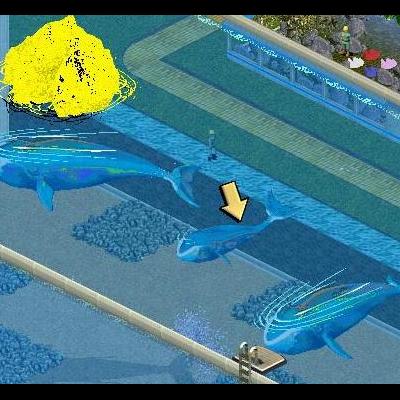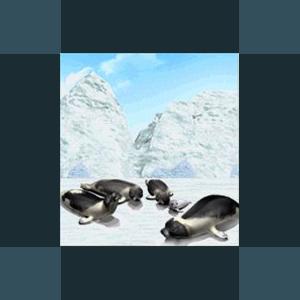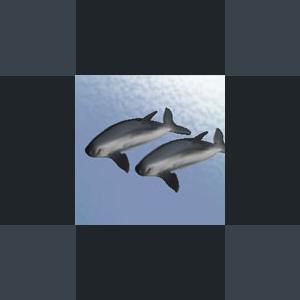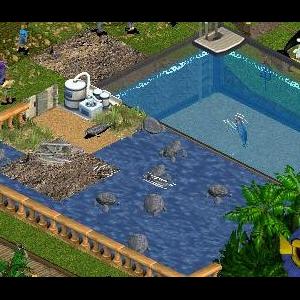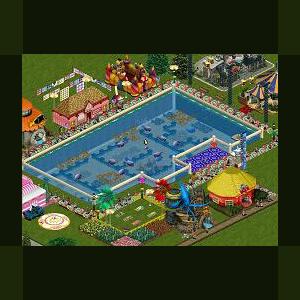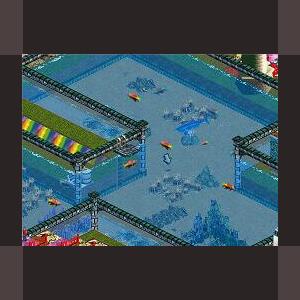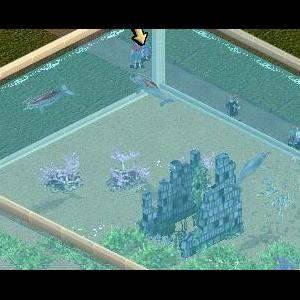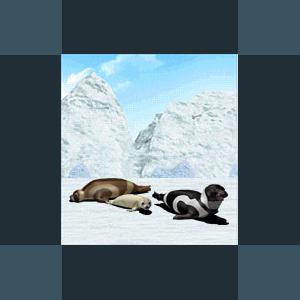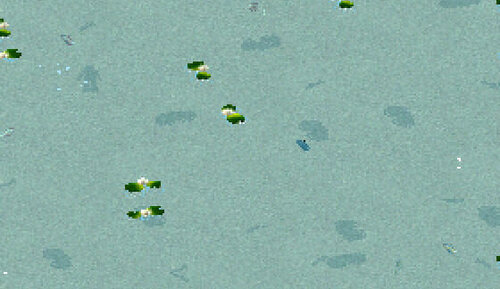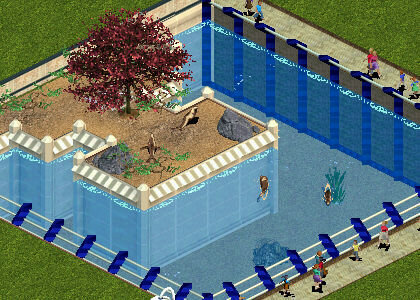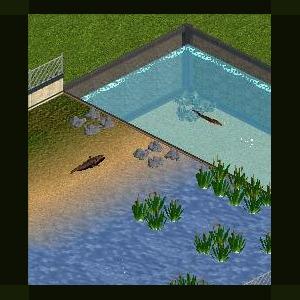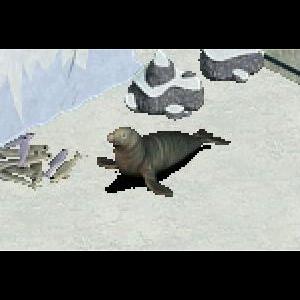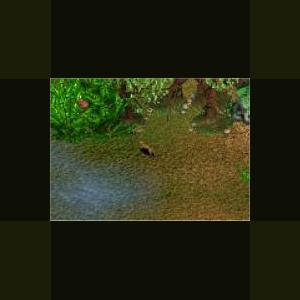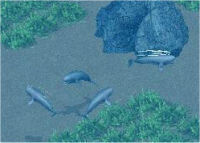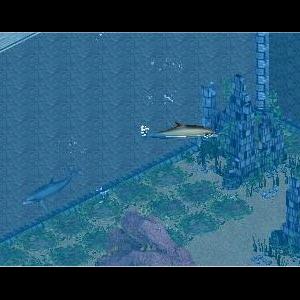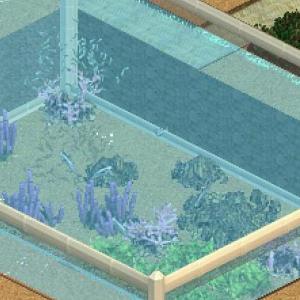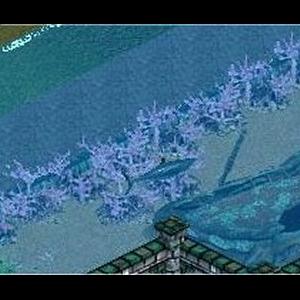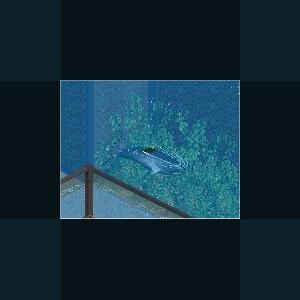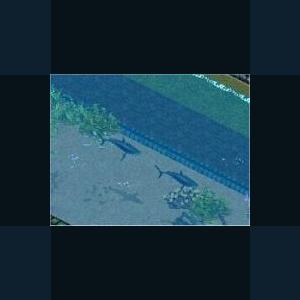Marine
Creatures under the sea
47 files
-
Pelagic Sea Snake by Khaydar
By Khaydar
Adopt a Pelagic Sea Snake (Hydrophis platurus), also known as the Yellow-bellied sea snake.
Animal guide:
Cannot be used in original Zoo Tycoon: Needs Marine Mania
Minimum happiness needed for chance of breeding: 96.
Liked foliage:
Sea Anemone (MM), Brittle Sea Star (MM), Orange Cup Coral (MM)
Divercate Tree Coral (MM), Feather Duster Worm (MM), Fire Coral (MM)
Kelp (MM), Sea Lettuce (MM), Red Gorgonian (MM), Sargassum (MM)
Sand Dollar (MM), Sea Cucumber (MM), Seaweed (MM), Sea Grass (MM)
Sea Sponge (MM), Stove Pipe Sponge (MM), Tube Worm (MM)
Purple Sea Urchin (MM)
Liked rock:
Small Ocean Floor Rock (MM), Medium Ocean Floor Rock (MM)
Large Ocean Floor Rock (MM), Medium Coral Formation (MM)
Large Coral Formation (MM), Iceberg (MM), Isle Rock (MM)
Number of animals allowed per exhibit: 1-3 with 25 squares each.
A suitable exhibit for 2 of this animal has 50 squares containing terrain of:
50 Salt Water using 8 Sargassum (MM) most liked plant
and using 16 Small Ocean Floor Rock (MM) most liked rock.
Other liked items:
Giant Pacific Clam (MM), Treasure Chest (MM), Deep Sea Diver Statue (MM)
204 downloads
- snake
- khaydars animal
- (and 1 more)
0 comments
Updated
-
Indo-Pacific Sailfish by Khaydar
By Khaydar
Adopt an Indo-Pacific Sailfish (Istiophorus platypterus) for your zoos.
Animal guide
Cannot be used in original Zoo Tycoon: Needs Marine Mania.
Minimum happiness needed for chance of breeding: 96.
Liked foliage:
Sea Anemone (MM), Brittle Sea Star (MM), Orange Cup Coral (MM)
Divercate Tree Coral (MM), Feather Duster Worm (MM), Fire Coral (MM)
Sargassum (MM), Sand Dollar (MM), Sea Cucumber (MM), Sea Grass (MM)
Sea Sponge (MM), Stove Pipe Sponge (MM), Tube Worm (MM)
Purple Sea Urchin (MM)
Liked rock:
Small Ocean Floor Rock (MM), Medium Ocean Floor Rock (MM)
Large Ocean Floor Rock (MM), Medium Coral Formation (MM)
Large Coral Formation (MM), Isle Rock (MM)
Number of animals allowed per exhibit: 1-6 with 30 squares each.
A suitable exhibit for 2 of this animal has 60 squares containing terrain of:
60 Salt Water
using 4 Brittle Sea Star (MM) most liked plant
and using 43 Small Ocean Floor Rock (MM) most liked rock.
Other liked items:
Giant Pacific Clam (MM), Treasure Chest (MM), Deep Sea Diver Statue (MM)
291 downloads
- living animal
- khaydars animal
- (and 1 more)
Updated
-
Leopard Seal by Khaydar
By Khaydar
Adopt a Leopard Seal (Hydrurga leptonyx) to your zoo.
Leopard Seal description:
Minimum happiness needed for chance of breeding: 90.
Liked foliage:
none
Liked rock:
Small Ocean Floor Rock (MM), Large Ocean Floor Rock (MM), Iceberg (MM), Isle Rock (MM), Large Rock
Small Rock - Medium, Small Rock - Small, Large Snowy Rock - Medium
Large Snowy Rock - Large, Small Snowy Rock - Medium, Small Snowy Rock - Small
Number of animals allowed per exhibit: 1-3 with 60 squares each.
A suitable exhibit for 2 of this animal has 120 squares containing terrain of:
72 Salt Water, 12 Gray Stone, 36 Snow
using no foliage
and using 29 Small Ocean Floor Rock (MM) most liked rock.
Other liked items:
Tank Filter (MM), Snowy Rock, Ice Floe (MM)
Credits to zerosvalmont for the model and mesh
Made by khaydar
309 downloads
- khaydars animal
- seal
- (and 1 more)
Updated
-
Bearded Seal by Khaydar
By Khaydar
Adopt a Bearded Seal (Erignathus barbatus) for your zoos.
Bearded Seal description:
Minimum happiness needed for chance of breeding: 90.
Liked foliage:
Horsetail (DD), Arctic Birch Tree (DD), Arctic Grass (DD), Arctic Bush (DD)
Beach Grass (MM)
Liked rock:
Small Ocean Floor Rock (MM), Large Ocean Floor Rock (MM)
Medium Coral Formation (MM), Iceberg (MM), Isle Rock (MM), Large Rock
Small Rock - Medium, Small Rock - Small, Large Snowy Rock - Medium
Large Snowy Rock - Large, Small Snowy Rock - Medium, Small Snowy Rock - Small
Number of animals allowed per exhibit:
1-4 with 60 squares each.
A suitable exhibit for 2 of this animal has 120 squares containing terrain of:
84 Salt Water, 36 Snow
using 2 grid squares filled with 4 Arctic Grass (DD) most liked plant
and using 29 Small Ocean Floor Rock (MM) most liked rock.
Other liked items:
Tank Filter (MM), Snowy Rock, Ice Floe (MM)
Credits to Jannick for the model and mesh
Made by Khaydar
183 downloads
- marine animal
- seal
- (and 2 more)
0 comments
Updated
-
Blue Shark by Ghirin
By Fern
Author: Ghirin
Description : The blue shark (Prionace glauca) is perhaps the most widely distributed pelagic species of shark. This shark is found in all of the world's oceans and has a preference for cooler waters (7-16 degrees C). It is often seen swimming near the surface but will dive to depths over 100 meters. Blue sharks have wide migratory patterns. Individual blue sharks have been tracked between different sides of oceans. Their diet is composed mainly of small schooling fishes such as anchovies and herring. Other foods such as squid and wounded marine mammals will be consumed if available.
As its name suggests, the blue shark has a deep blue upper body and a white ventral surface. The body is slender and the pectoral fins are long.
Male and female blue sharks live separately, coming together only for mating. Females are viviparous and very prolific. Litters can range in size from 15 to 130 pups.
*Inspired by the ZooTycoons Brains Trust at the Zoo Tek Forums.
135 downloads
0 comments
Submitted
-
Blue Whale by JohnT
By Admin Uploader
Thank you for downloading the Blue Whale. Blue Whales are the largest known whale in the world. Blue Whales like a variety of foliage in their exhibits.
Thank you to Fern, Jay and Dr. Rick for their invaluable encouragement, guidance and expertise; and to Caddie and Pukkie for their testing expertise.
263 downloads
Updated
-
Harp Seal by Tasmanian_tiger
By Fern
Author : Taz (Tasmanian_tiger)
Category : Real animal, Pinniped
Updated: September 25, 2013 by Jay to remove the background for the male and female animal list icons, to add an animal list icon for the young, to remove the top and bottom edges of the purchase menu icons, to adjust the positions of all animations, to make minor adjustments to the animal info, to add the preferred object tooltip for the female and young, to add the capability of a simple surface roll trick for show tanks, to add the capability to use 3 user made toys, to remove unnecessary files and configuration lines, and to correct configuration mistakes done by the APE program.
Current ztd date: September 25, 2013
Compatibility : All Game Versions
Description : The Harp Seal is somewhat larger than the Common Seal, growing to 5.5 ft (1.67 m) long and with a weight of 115-180 kg (253-400 lb). Males are distinctly larger than females. Harp Seals are well known for the saddle-like spot on their backs. Adult males are creamy white overall, with a dark chocolate brown head and a broad dark chocolate brown U-shaped pattern on their back, running across the shoulders and down each flank to near the base of the tail; the pattern is often slightly asymmetrical and irregular, with dark brown spots extending onto the white parts. Adult females have a similar but less distinct pattern, with the brown being paler and greyer. Immature Harp Seals up to two to three years old are pale grey, variably spotted with darker grey. The flippers are white or pale grey, with five stout claws on each fore flipper. The tail is short, 10-15 cm long. The fur on adults is 2 cm long, dense, stiff, and velvety; the skin is roughly the same color as the fur: whitish-grey under the white fur, and dark brown under the brown fur. The vibrissae are numerous on the muzzle, the longest about 12 cm long. The newborn pups are all white except for a black nose and eyes, which helps them blend in with the snow. Puberty is reached at 5-7 years, and the maximum lifespan is more than 30 years. Since newborn harp seals do not enter the water for a number of weeks, the young of this harp seal does not go in water. This Harp Seal can use the Ice Floe For Certain Animals By Taz, the Ice Floe For Certain Animals, and the Raft For Certain Animals. The Harp Seal is compatible with the Emperor Penguin, although the Emperor Penguin doesn't like it but will accept its presence and cause no problems. However, if the Emperor Penguin is in the same exhibit, then the exhibit must not have the Ice Floe For Certain Animals By Taz, the Ice Floe For Certain Animals, or the Raft For Certain Animals, since the penguin could get stuck on those toys, being that the penguin is not configured for those toys. The Harp Seal is also compatible with the Ribbon Seal made by Taz.
Note: ZT is not used to animals where the adults go in tanks while the young do not. So it can keep changing its mind between the exhibit being suitable and the exhibit needing more salt water terrain and less snow. Whenever it does change its mind and wants more salt water terrain, do so. Eventually it will get to a point where it does not change its mind.
515 downloads
0 comments
Submitted
-
Vaquita (or Gulf of California Porpoise) by Tasmanian Tiger
By Fern
Vaquita (or Gulf of California Porpoise)
Author : Taz (Tasmanian_tiger)
Category : Tank animal, Critically endangered animal, Cetacean
Updated: July 26, 2013 by Jay to remove unnecessary files and configuration lines and to make some minor adjustments to the animal info.
Current ztd date: July 26, 2013
Compatibility : MM/CC
Description : The vaquita, or also called the 'Gulf of California Porpoise', is one of the smallest cetaceans around. It's about 1.5 meters or 5 feet long. Please note that the version at Taz's site is no longer the most current version, since she is deceased.
390 downloads
0 comments
Updated
-
Habour (or Common) Seal by Tasmanian Tiger
By Fern
Harbour (or Common) Seal
Author : Taz (Tasmanian_tiger)
Category : Real animal, Pinniped
Updated: June 29, 2013 by Jay to correct 3 animation views, to remove unnecessary files and configuration lines, and to correct configuration mistakes done by the APE program, primarily related to animal behaviors and to sounds. Please note that the version at Taz's site is no longer the most current version, since she is deceased.
Current ztd date: June 29, 2013
Compatibility : All Game Versions
Description : The most widespread pinniped, the Common or Harbour Seal has a plump body and a small, cat-like head with a slight forehead and nostrils that form a V-shaped pattern. Its coat ranges from light to dark grey or brown, and has spots, rings and blotches all over. The breeding season varies regionally, and the pups are able to crawl and swim almost within an hour of birth. There are at least five subspecies of Common Seal. One of them, the Ungava Seal, lives in fresh water in N. Quebec, Canada. (Text by Dorling Kindersley Handbooks.)
478 downloads
0 comments
Updated
-
Powder Blue Tang by JT (JohnRN1)
By Cricket
Thank you for downloading the Powder Blue Tang. This saltwater fish is compatible with the Cuban Hogfish and is created for the Tek 2012 Anniversary.
"Move the .ztd file into the dlupdate (and not dupdate) folder if one exists in your Zoo Tycoon folder; otherwise move the .ztd file into the Updates folder that is in the Zoo Tycoon folder."
The default is C:\Program Files\Microsoft Games\Zoo Tycoon
Thank you to Fern and Jay for their invaluable encouragement, guidance and expertise.
--JohnT--
325 downloads
Updated
-
Cuban Hog Fish by JT (JohnRN1)
By Cricket
Thank you for downloading the Cuban Hog Fish. This colorful saltwater fish was made for the 2012 Tek Anniversary. Congratulations Tek.
"Move the .ztd file into the dlupdate (and not dupdate) folder if one exists in your Zoo Tycoon folder; otherwise move the .ztd file into the Updates folder that is in the Zoo Tycoon folder."
The default is C:\Program Files\Microsoft Games\Zoo Tycoon
Thank you to Fern and Jay for their invaluable encouragement, guidance and expertise.
--JohnT--
359 downloads
0 comments
Updated
-
Baiji by Tasmanian_tiger
By Tasmanian_tiger
The baiji is a freshwater dolphin found only in the Yangtze River in China. The dolphin is also called Chinese River Dolphin, Yangtze River Dolphin, Whitefin Dolphin and Yangtze Dolphin. The Baiji population declined drastically in decades as China industrialized and made heavy use of the river for fishing, transportation, and hydroelectricity. Efforts were made to conserve the species, but a late 2006 expedition failed to find any Baiji in the river. Organizers declared the Baiji "functionally extinct",[4] which would make it the first aquatic mammal species to become extinct since the demise of the Japanese Sea Lion and the Caribbean Monk Seal in the 1950s.
I hope you enjoy this addition to your zoos. Combine the baiji with pandas to create lively 'river-tanks'.
Updated: July 10, 2013 by Jay to correct 3 animation views, to remove unnecessary files and configuration lines, and to make some minor adjustments to the animal info.
The update dated Jul 28 2013 is not an update. It is because I moved the file from Animals to Marine.
839 downloads
Updated
-
Ribbon Seal by Tasmanian Tiger
By Guest
The ribbon seal of the north pole to add to your zoo!
The ribbon seal is compatible with the emperor penguin, although the emperor penguin doesn't like it, it will accept its presence and cause no problems.
Updated: September 27, 2013 by Jay to remove the background for the male animal list icon, to add animal list icons for the female and young, to remove the top and bottom edges of the purchase menu icons, to adjust the positions of all animations, to make minor adjustments to the animal info, to add the preferred object tooltip for the female and young, to add the capability of a simple surface roll trick for show tanks, to add the capability to use 3 user made toys, to add a purchase menu tooltip, to remove unnecessary files and configuration lines, and to correct configuration mistakes done by the APE program. Please note that the version at Taz's site is no longer the most current version, since she is deceased.
Current ztd date: September 27, 2013
Compatibility : All Game Versions
Description : The ribbon seal or the Histriophoca fasciata grows to a maximum of 1.9 metres in size. It is found in the Arctic and Subarctic regions of the North Pacific Ocean, notably in the Bering Sea and Sea of Okhotsk. It is the only species in the genus Histriophoca. The Ribbon Seal is a medium-sized pinniped from the family called Phocidae. Members of the Phocidae family are also called true seals or earless seals because they lack external ear flaps. Since newborn ribbon seals do not enter the water for a number of weeks, the young of this ribbon seal does not go in water. This Ribbon Seal can use the Ice Floe For Certain Animals By Taz, the Ice Floe For Certain Animals, and the Raft For Certain Animals. The Ribbon Seal is compatible with the Emperor Penguin, although the Emperor Penguin doesn't like it but will accept its presence and cause no problems. However, if the Emperor Penguin is in the same exhibit, then the exhibit must not have the Ice Floe For Certain Animals By Taz, the Ice Floe For Certain Animals, or the Raft For Certain Animals, since the penguin could get stuck on those toys, being that the penguin is not configured for those toys. The Ribbon Seal is also compatible with the Harp Seal made by Taz.
Note: ZT is not used to animals where the adults go in tanks while the young do not. So it can keep changing its mind between the exhibit being suitable and the exhibit needing more salt water terrain and less snow. Whenever it does change its mind and wants more salt water terrain, do so. Eventually it will get to a point where it does not change its mind.
1,204 downloads
Updated
-
Trout Pack by Coolperson5
By Guest
A pack of freshwater trout.
This pack includes 5 species of freshwater trout.
Apache Trout
Bull Trout
Cutthroat Trout
Gila Trout
Golden Trout
Each fish needs a 5 square tank of any depth with 2 squares of water lilys and one square of rocks. The zookeeper will say that it needs a mate if it is alone, but it will not affect suitability or happiness.
Have Fun!
This file includes both Trout Pack_CP5Combined.ZTD, which is combined, and the 5 individual files. If the combined .ZTD is used, the others are not needed.
580 downloads
0 comments
Updated
-
Japanese Sea Lion by Coolperson5
By Guest
Japanese Sea Lion (Zalophus japonicus) is thought to have become extinct in the 1950s.
Prior to 2003 it was considered to be a subspecies of California Sea Lion as Zalophus californianus japonicus. However, it was subsequently reclassified as a separate species. Some taxonomists still consider it as a subspecies of the California Sea Lion. It has been argued that japonicus, californianus, and wollenbaeki are distinct species because of their distant habitation areas and behavioral differences.
They inhabited the Sea of Japan, especially around the coastal areas of the Japanese Archipelago and the Korean Peninsula. They generally bred on sandy beaches which were open and flat, but sometimes in rocky areas.
Currently, several stuffed specimens can be found in Japan and the National Museum of Natural History, Leiden, the Netherlands brought by Philipp Franz von Siebold. The British Museum possesses a pelt and 4 skull specimens.
426 downloads
0 comments
Updated
-
0 comments
Submitted
-
Salmon Shark by Ghirin
By Guest
Salmon Shark
Author: Ghirin
The salmon shark (Lamna ditropis) is considered by many to the Pacific Ocean equivalent of the porbeagle. This shark has a similar build and shape as other members of the mackerel shark family. Like the mako, porbeagle and great white, the salmon shark is able to maintain it body temperature several degrees above the surrounding ocean.
This shark prefers the cooler waters of the northern Pacific Ocean and ranges from California to the coasts of South Korea. It is mainly pelagic in habitat but will travel in coastal and epipelagic regions of it range.
Salmon sharks may form schools, but the sexes do not school together. It is a fast swimmer. Its main diet is composed of a variety of fishes including salmon, herring, sardines, cod, and dogfish. They will also consume squid when available.
*Inspired by the Zoo Tycoons Brains Trust at the Zoo Tek Forums.
Created by Ghirin 2004
325 downloads
0 comments
Updated
-
Crabeater Seal by Ghirin
By Guest
Crabeater Seal by Ghirin
The crabeater seal (Lobodon carcinophagus) is one of the most common large mammals in Antartica.
It is known for its complicated tooth pattern which forms an interlocking sieve for filtering krill.
Crabeater seals usually haul out on the pack ice, but have also been known to travel inland.
*Inspired by Professor Paul's Nature Encyclopedia at the Zoo Tek Forums*
References:
http://en.wikipedia.org/wiki/Crabeater_Seal
http://www.antarcticconnection.com/antarct...crabeater.shtml
422 downloads
0 comments
Updated
-
Otter Civet by Ghirin
By Guest
Otter Civet
Author: Ghirin
The otter civet (Cynogale bennettii) resides in swampy wetlands and borders of streams and rivers in tropical southeast Asia and Indonesia. It is semi-aquatic and resembles a small sea otter. The civet otter is thought to ambush small mammals and birds when they come to the water to drink; it may also eat crustaceans, mollusks, fish and fruit.
References:
Walker’s Mammals of the World. Nowak, 1999
Created by Ghirin 2003
386 downloads
0 comments
Updated
-
Finless Porpoise by Ghirin
By Guest
Finless Porpoise Author: Ghirin
The finless porpoise (Neophocaena phocaenoides) is found in the costal waters from the Persian Gulf to Japan. Populations are also found in adjacent estuaries, rivers, and shallow channels. They prefer shallow waters (up to 50 m deep) with soft or sandy bottoms.
Due to its lack of a dorsal fine, it is easy to identify in the wild. The living animal is often blue-gray and may darken after death. The neck vertebrae are not fused, allowing the animal to turn its head. Males may grow to 2 m and females range up to 1.5 m in length.
Finless porpoises often seen in singly or in groups of 2-4. Large groupings of up to 20 have been reported. Their primary diet consists of small fish, squid, crustaceans, and octopus.
Created by Ghirin 2003
413 downloads
0 comments
Updated
-
Spinner Dolphin by LAwebTek
By Guest
Spinner Dolphin
Author: LAwebTek
Classified Stenella longirostris in 1828 - the specific name referring to this species' long snout. This species is found in tropical and subtropical waters worldwide. There are no subspecies, but there are four distinct Eastern Pacific forms: the Eastern, the Whitebelly, the Costa Rican and the Hawaiian.
The Spinner Dolphin is a slender creature with a long, thin beak to which the distinct forehead slopes gently. The dorsal varies with both age and geographical form; it can lean forward, be curved, or be completely triangular in shape. The flippers are long and pointed, and a stripe links them to the eyes. Eastern Pacific and Costa Rican animals are mainly grey, with other forms usually two- or three-tone. Both the Hawaiian and Whitebelly forms have a dark grey or black dorsal cape, paler flanks and sides, and a creamy-white belly. All forms measure between 1.3 and 2.1m in length, and weigh between 45-75kg.
Units range from a few animals to a few thousand, often mixing with other cetacean species such as Pilot Whales and Spotted Dolphins. They are dramatically acrobatic, with somersaults, high spinning leaps and other aerial movements popular. They vocalise with whistles and clicks, and can travel as fast as 20kph. Spinner Dolphins inhabit both offshore and inshore waters and feed on midwater fish and squid. They are different from other dolphins in that they feeds at night.
Spinner Dolphins are often targeted in the purse-seine and yellowfin tuna fisheries of the eastern Pacific Ocean. Elsewhere, many of these dolphins are accidentally killed in gillnets, and also taken in harpoon fisheries. Some individuals have been kept successfully in captivity for at least 10 years.
2003 LAwebTek
427 downloads
Updated
-
Silver Carp by Ryno
By Guest
The silver carp (Hypophthalmichthys molitrix) is a species of freshwater cyprinid fish
349 downloads
0 comments
Updated
-
Saltwater Bull Shark by Ghirin
By Guest
Saltwater Bull Shark
Author: Ghirin
The bull shark (Carcharhinus leucas) is a large, robust shark found in shallow coastal marine waters worldwide. These sharks will also enter and live in estuaries, freshwater lakes and rivers.
Bull sharks eat both bony fishes and small sharks. In the cooler portions of their range, bull sharks mate during the summer months; however, in the warmer parts of their range they may breed year-round. Females nourish the young internally for 10 to 11 months and give birth to free-swimming pups.
*Inspired by the Zoo Tycoon Brains Trust at the Zoo Tek Forums.
Created by Ghirin 2004
375 downloads
0 comments
Updated
-
Shortfinned Pilot Whale by Ghirin
By Guest
Short-finned Pilot Whale by Ghirin
The short-finned pilot whale (Globicephala macrorhynchus) is a large member of the dolphin family.
It is extremely social and usually travels in large groups.
References:
http://www.acsonline.org/factpack/PilotWhale.htm
www.wikipedia.org
*Inspired by the Zoo Tycoon Brains Trust at the Zoo Tek Forums*
477 downloads
0 comments
Updated
-
Dusky Shark by Ghirin
By Guest
Dusky Shark Author: Ghirin
The dusky shark (Carcharhinus obscurus) has a wide distribution among the coastlines of temperate and tropical regions, with major populations found in the western Atlantic Ocean, western Indian Ocean, Mediterranean Sea, Pacific coast, and Australian waters. This shark prefers the relatively shallow waters of continental shelves. Young dusky sharks may congregate in bays and estuaries; however, adult dusky sharks avoid areas of low salinity. Dusky sharks are highly migratory. The exact path of migration varies with specific shark populations and is seasonal in nature.
Dusky sharks prey on bottom-dwelling fish and invertebrates (i.e., skates, crabs, flatfish). They will also feed on pelagic fishes. Dusky sharks are viviparous with litter sizes ranging from 3 to 14 pups.
*Inspired by the Zoo Tycoon Brains Trust at the Zoo Tek Forums.
Created by Ghirin 2004
380 downloads
0 comments
Updated

